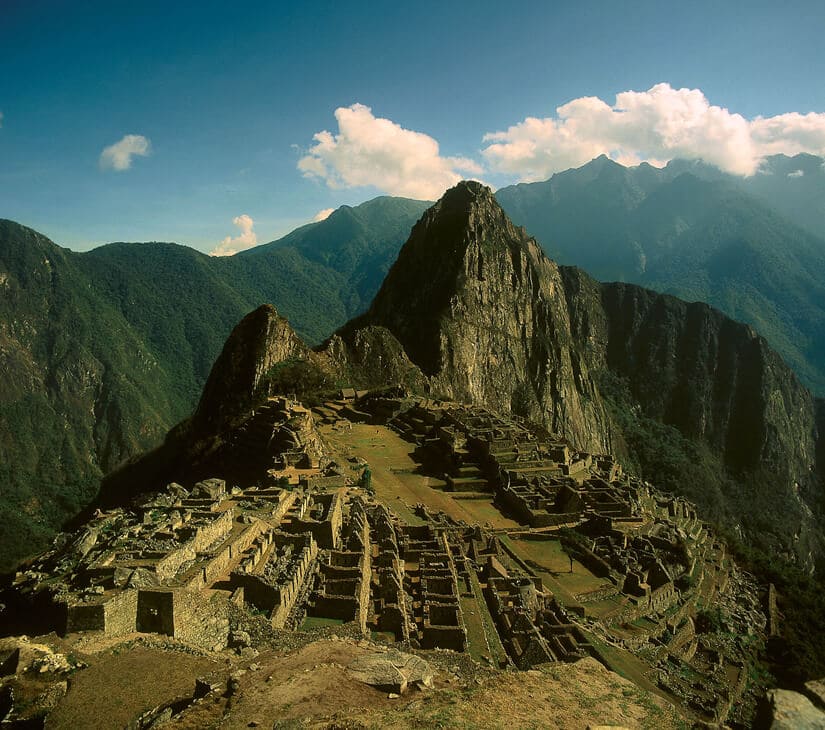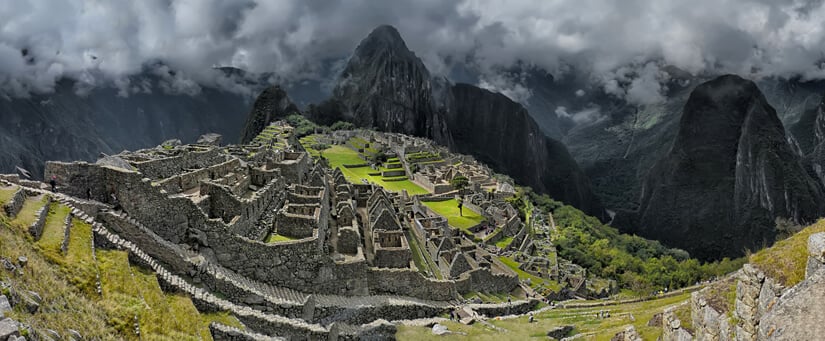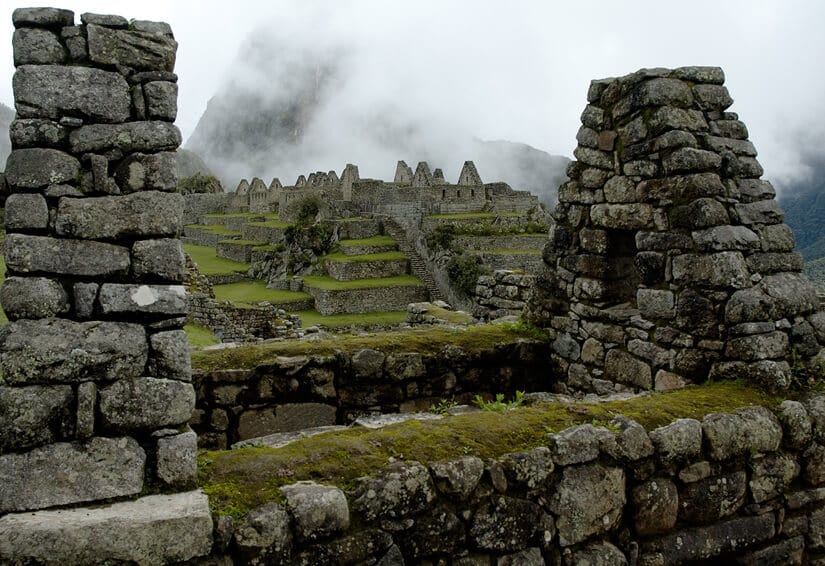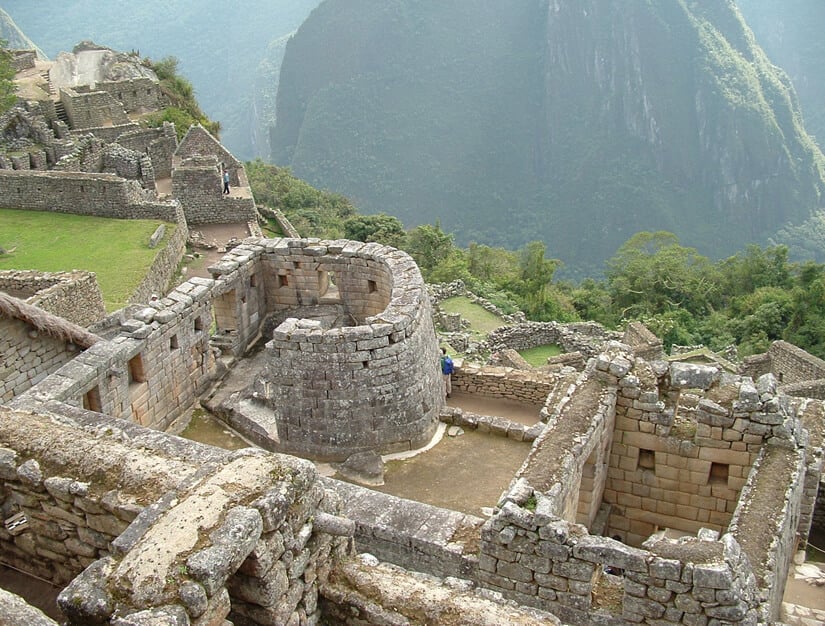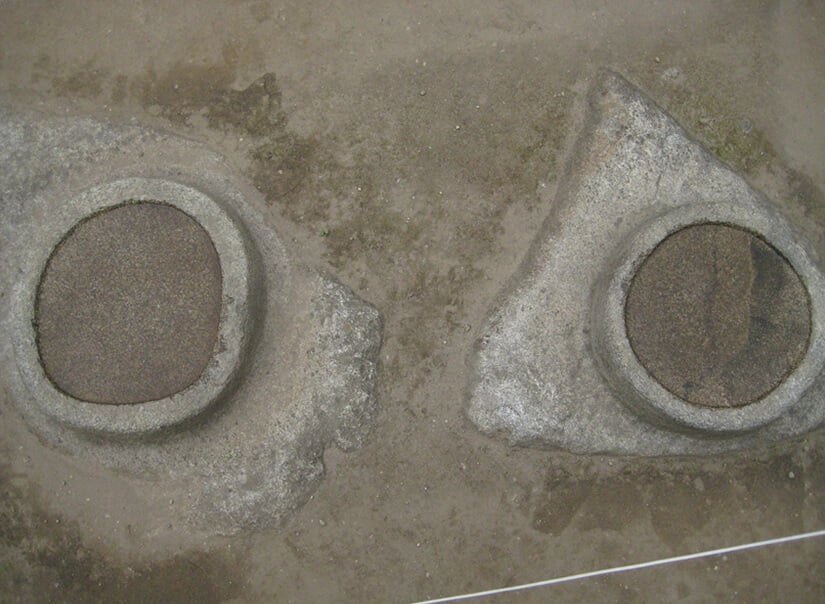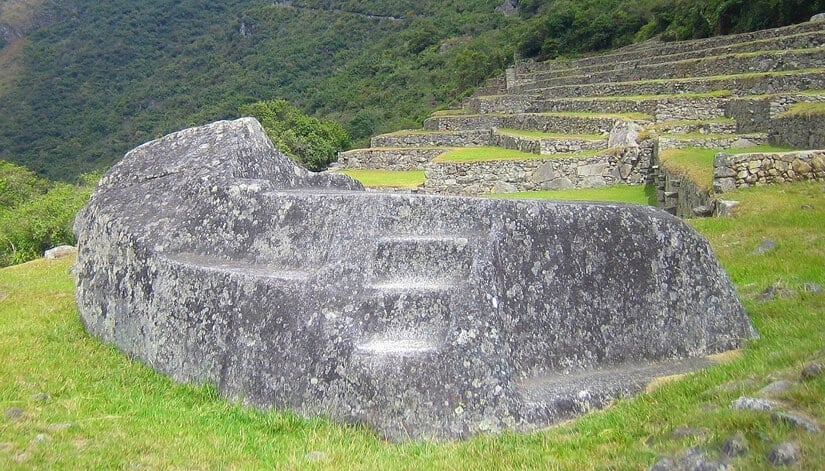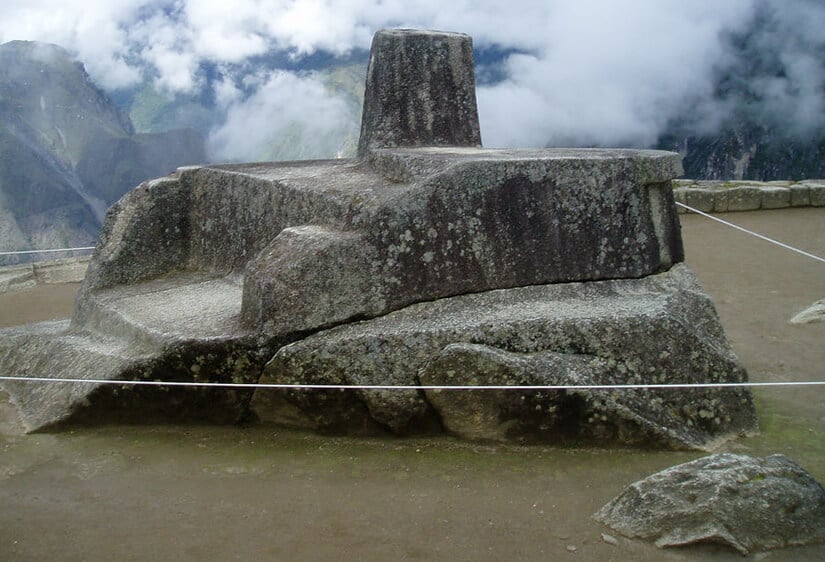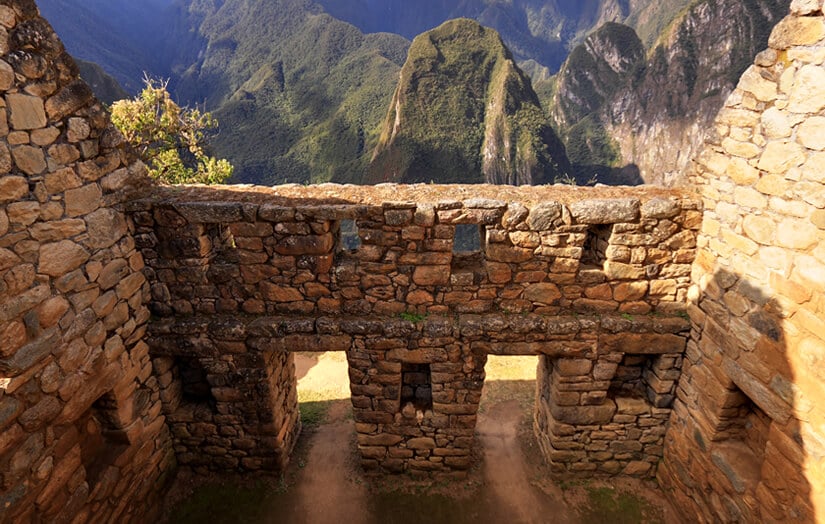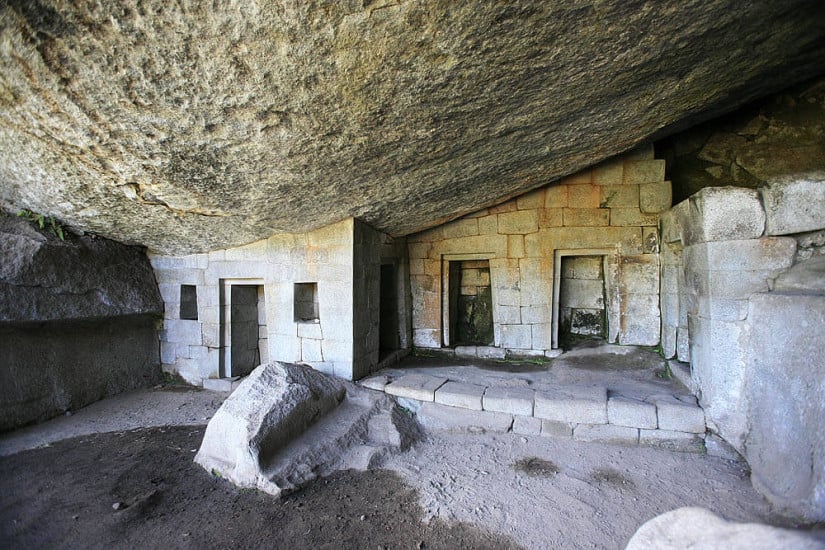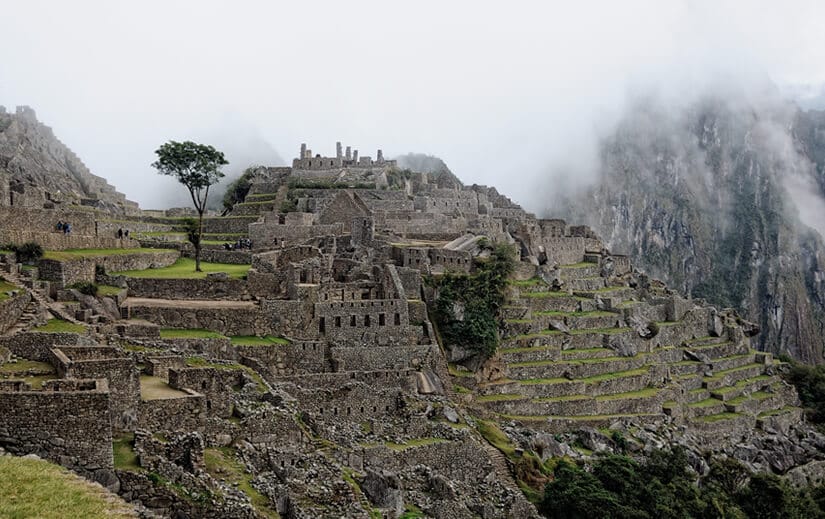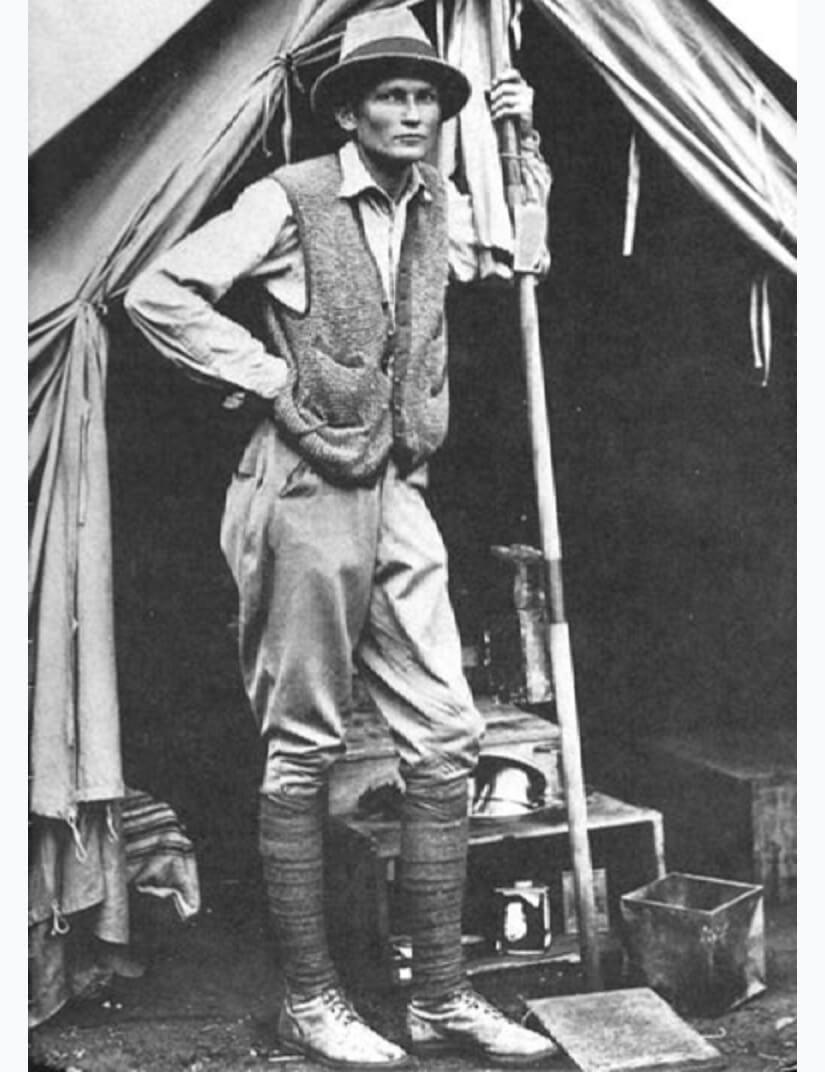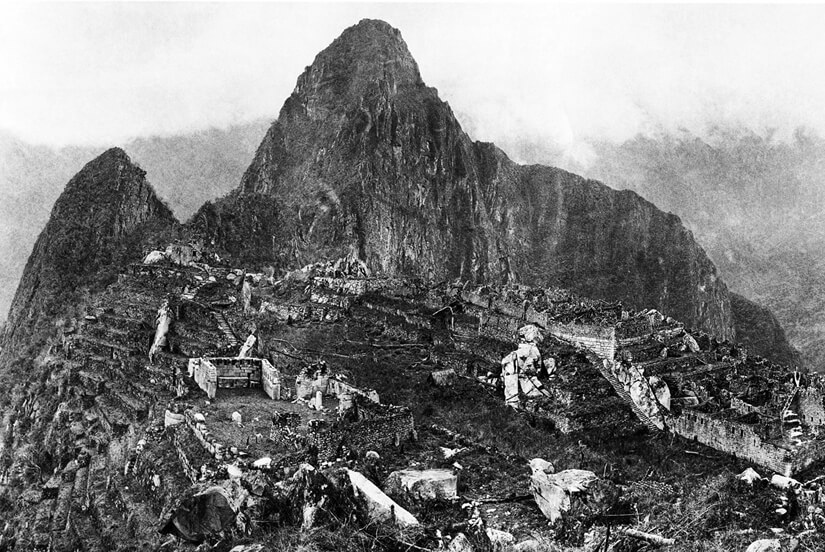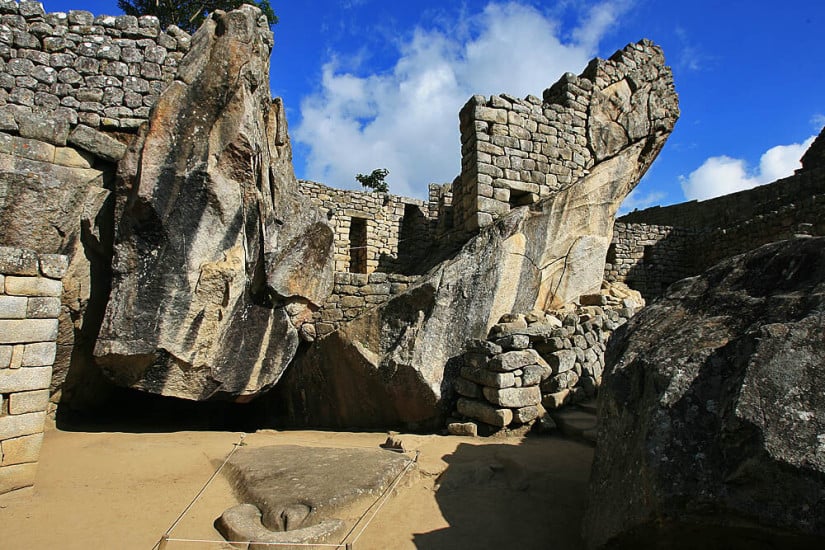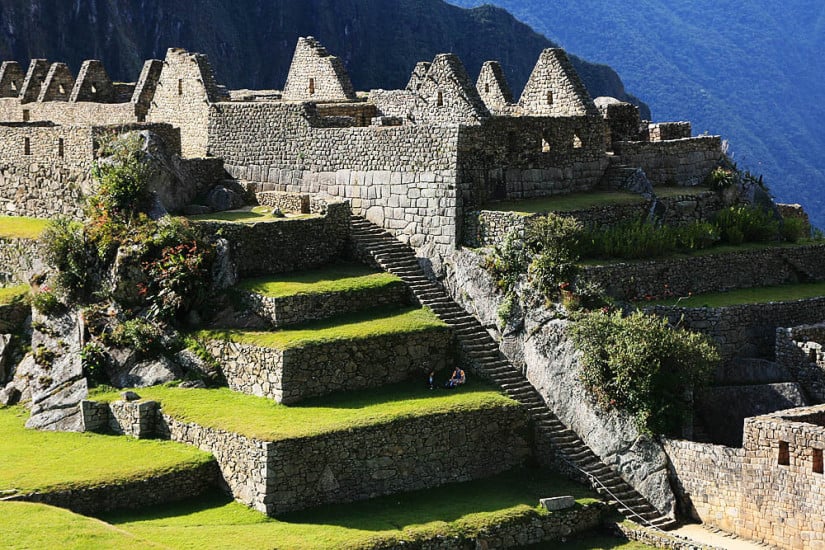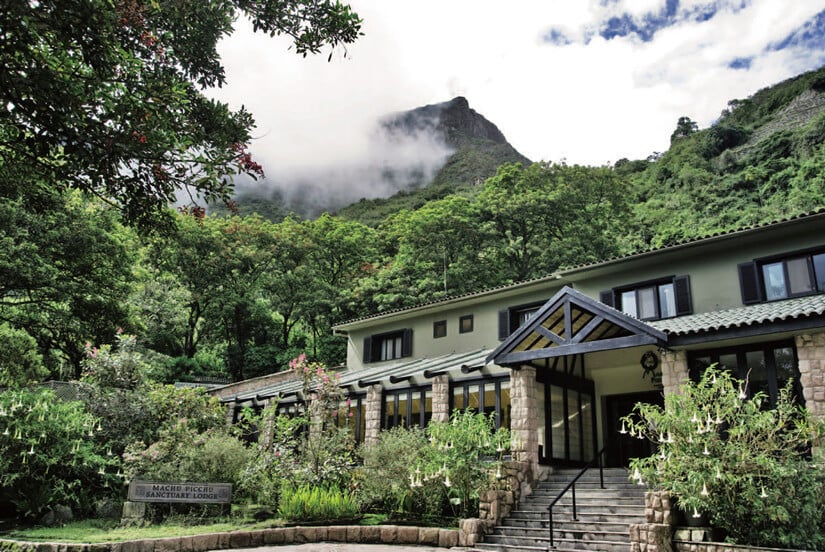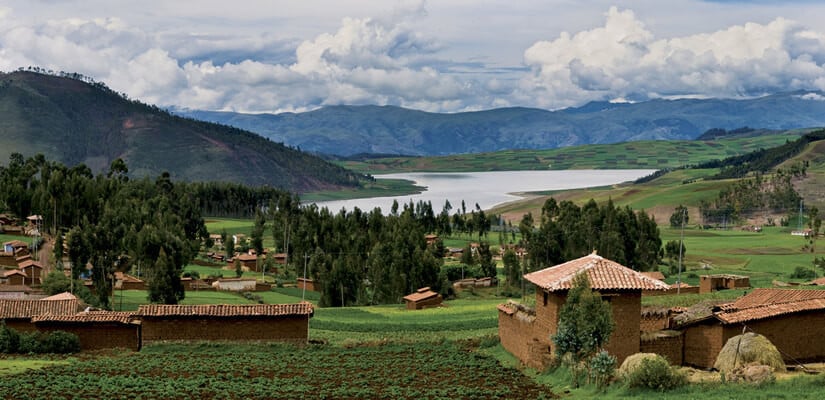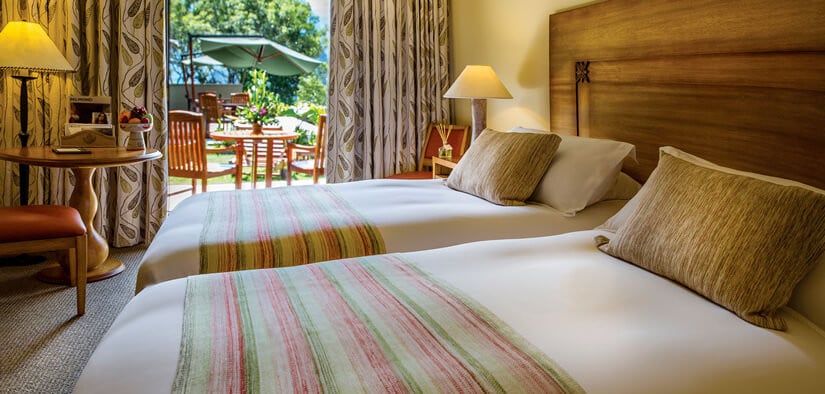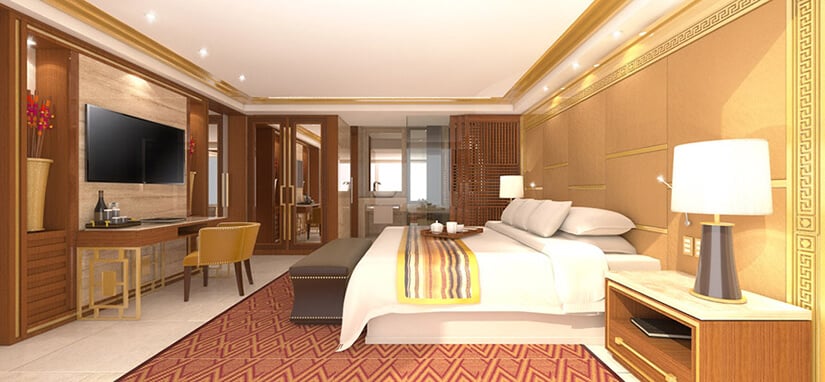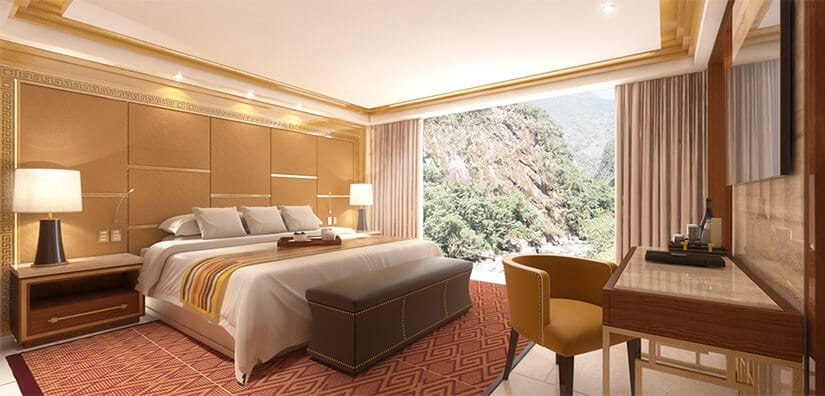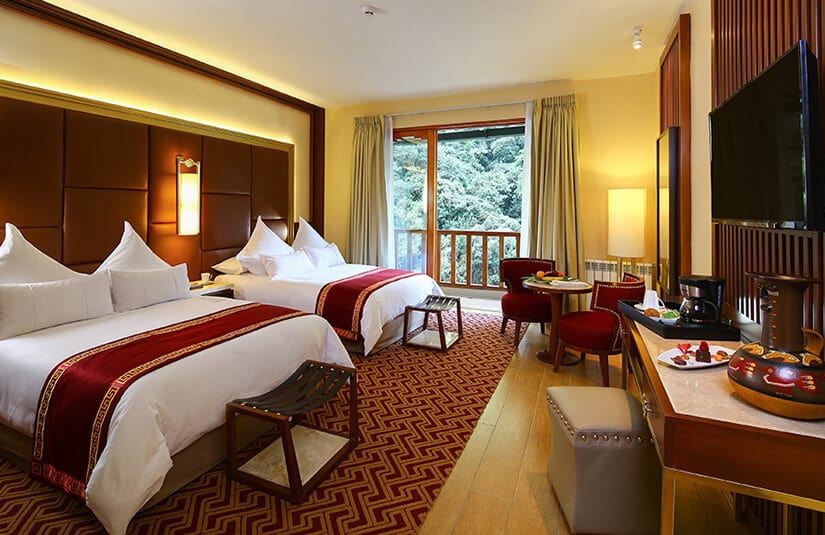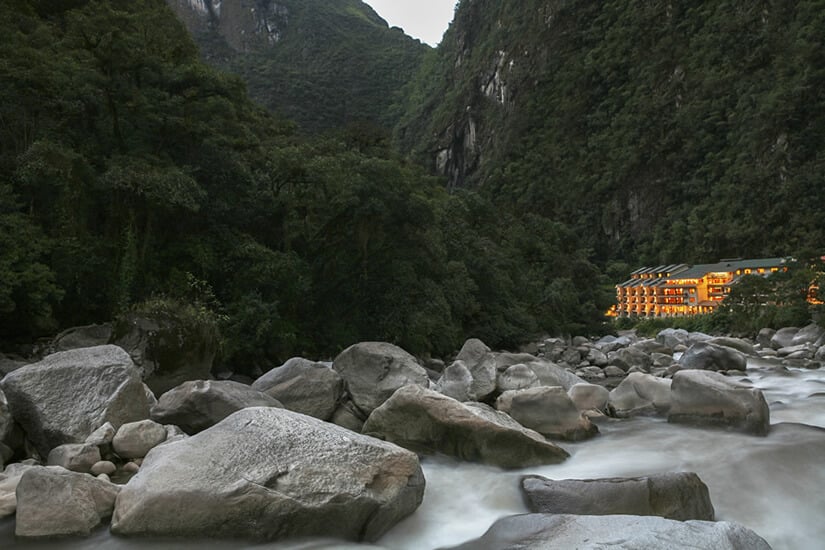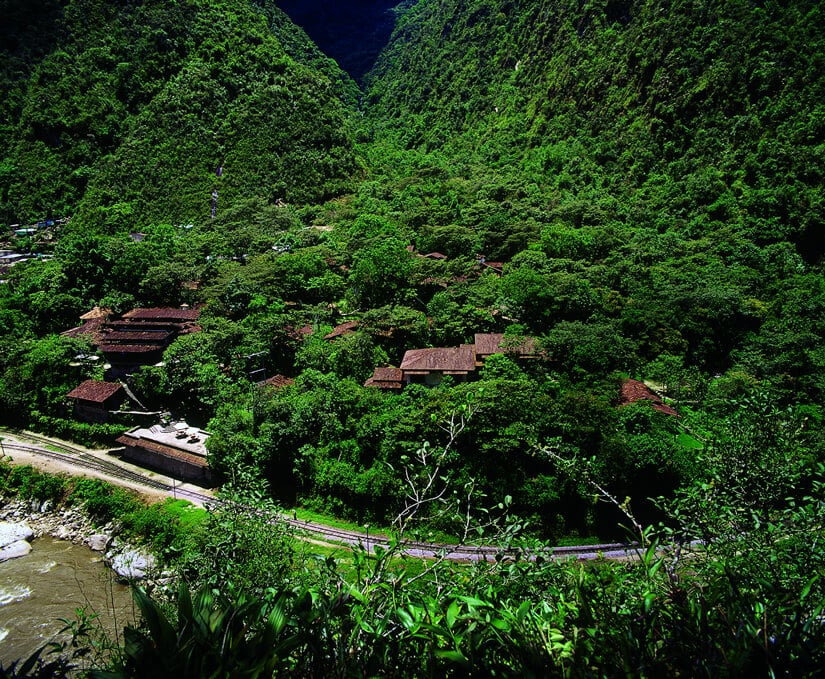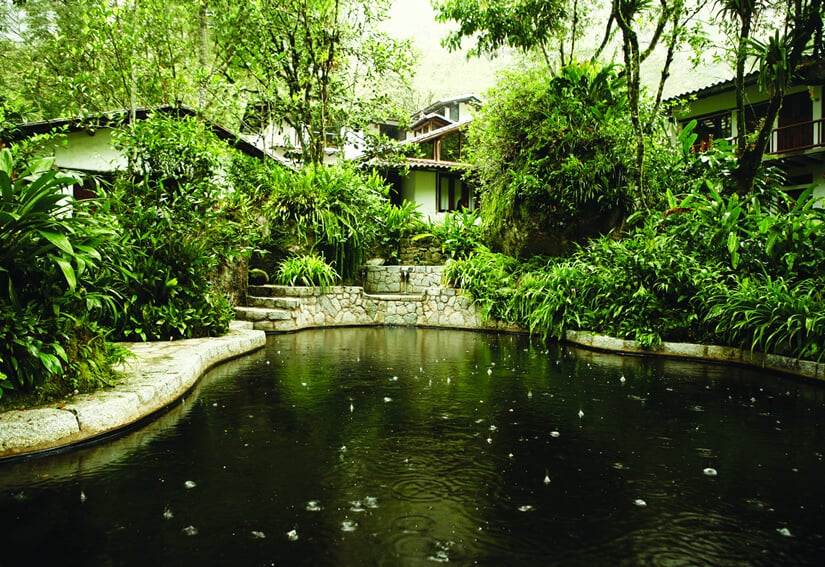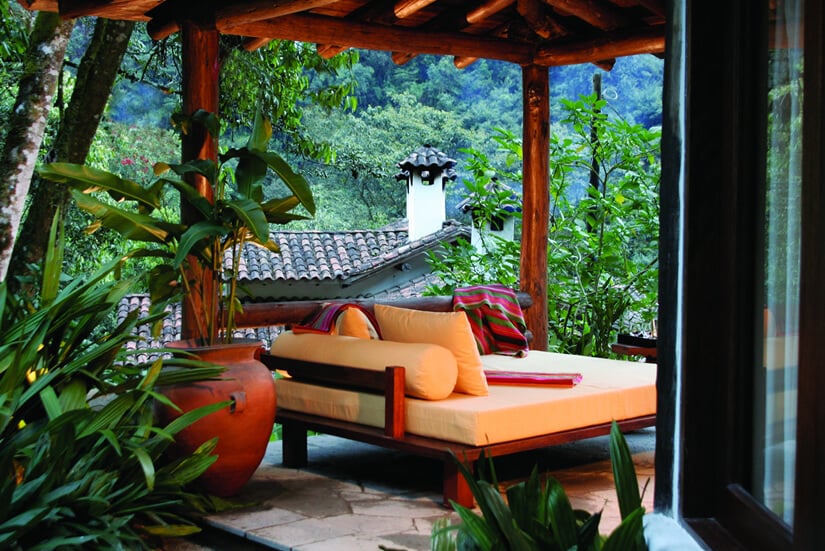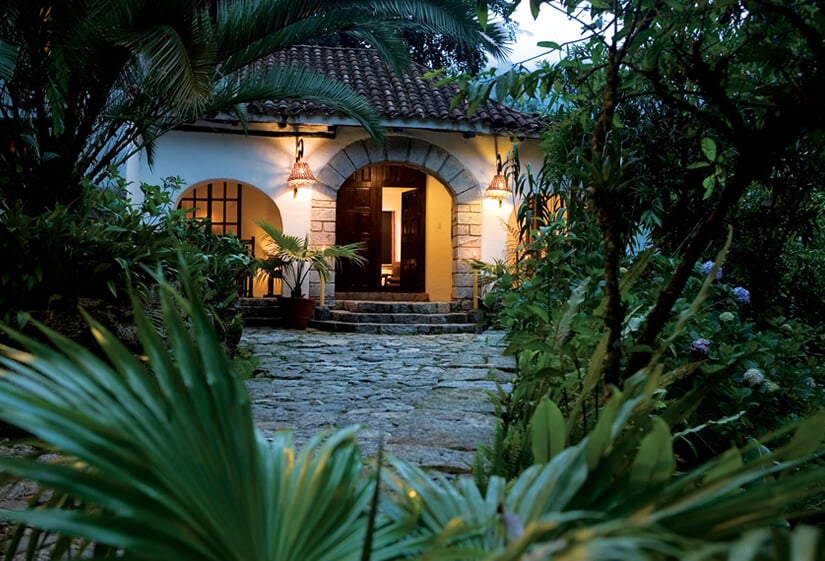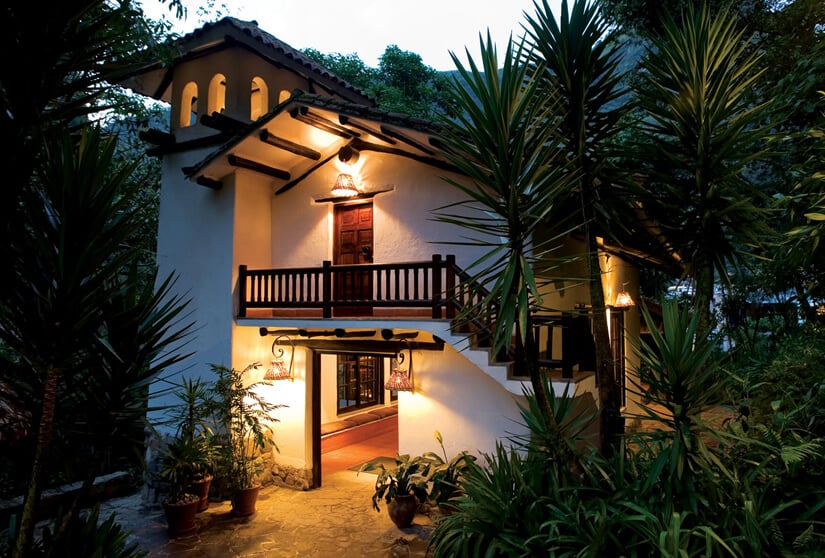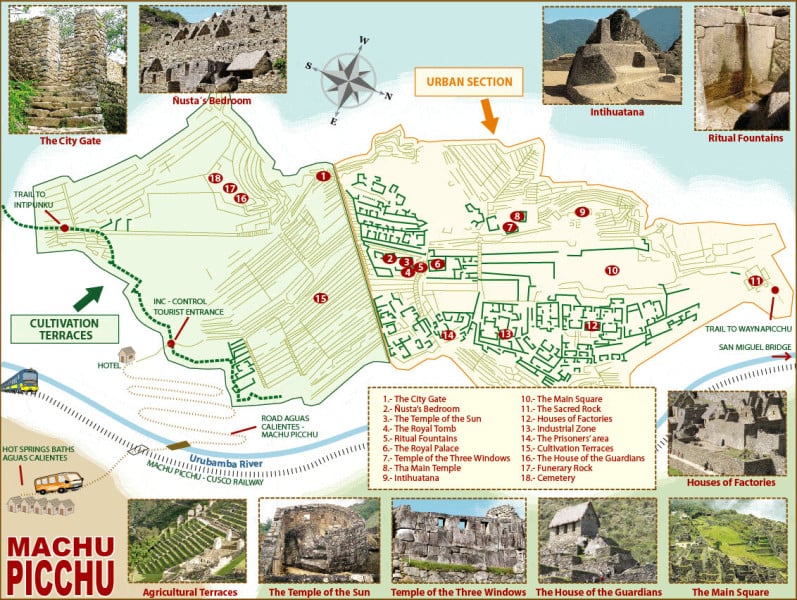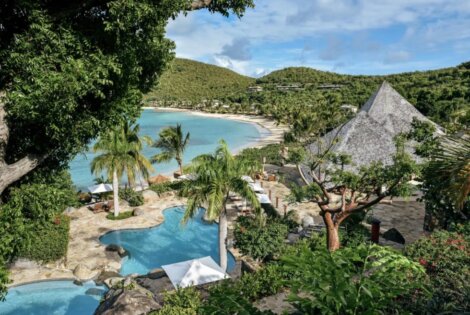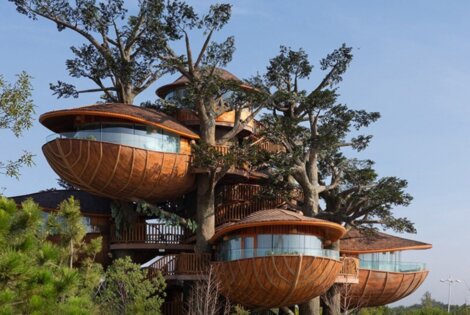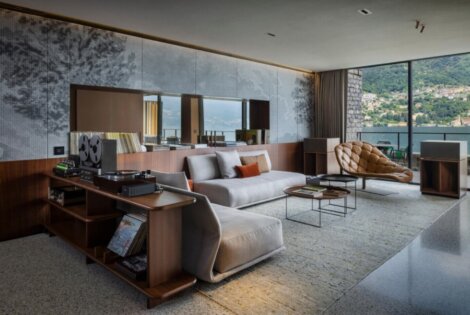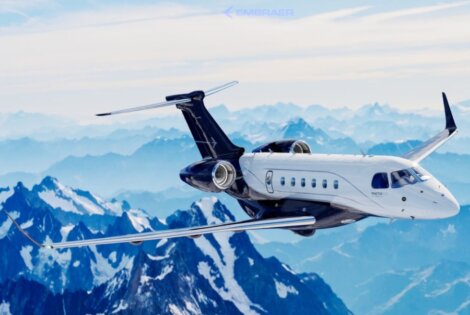There are several good reasons why you should choose Peru as your next luxury vacation destination, but Machu Picchu is probably one of the best. It is unique, it is spectacular, it is a UNESCO World Heritage Site, it has enormous cultural and historic value and it is soaked in mystery. Add to that a few excellent hotels that cater to the most discerning of guests, and what you get is an absolutely irresistible destination.
Panoramic view of Machu Picchu, with Huayna Picchu at the background – source
Most people wouldn’t think of Machu Picchu as a good place for luxury high altitude vacations, but there are in fact a few excellent world-class accommodation options close to the site. Adventure lovers can also choose a luxury Inca trail experience, which represents an unforgettable way of trekking through the Andes all the way to the iconic ruins: plush camping, gourmet food and personal porters are all part of the offer.
Machu Picchu Facts and Summary
- The Machu Picchu ruins in Peru are located on the crest of the namesake mountain, approximately 8,000 feet above mean sea level. It can be found about 50 miles northwest of Cusco, the historic capital of the Inca Empire and a UNESCO World Heritage Site.
- A 15th century settlement, it is one of the most important archaeological sites in the world, as well as the most visited tourist attraction in the country.
- The Urubamba River flanks the site on three sides, and its architecture is perfectly adapted to the mountain, featuring wide terraces and sturdy buildings made using the dry-stone technique, which means masterfully interlocking stones without using any mortar.
- Evidence suggests that the inhabitants of the city did not use the wheel at all, which doesn’t also necessarily imply that they had no knowledge of its existence. Artifacts which appear to have been children’s toys do feature wheels, indicating that the local inhabitants knew of its practicality, yet could not make any use of it on the steep and irregular site of their citadel.
- The exact purpose for which the citadel was built is still unclear for archaeologists, historians and other experts today. Its geographical position, its complex layout and its various types of buildings and distinct areas make it an ideal candidate for at least three different statuses: that of a military stronghold, a strictly ceremonial site, and a perfectly hidden retreat for the society’s elite.
- Regardless of its intended function, the site represents priceless tangible proof of the bewildering complexity of the Inca civilization. It was built during the peak of the Inca Empire development, boasting a spectacular urban design as well as exquisite workmanship.
- There are over 200 buildings on the mountain, clearly grouped for different types of activities and inhabitants, from temple and ceremonial areas in the urban sector to warehouses and simple homes in the agricultural sector.
- While there is no solid evidence of regular human sacrifice practices in Machu Picchu, there is some proof of retainer sacrifices, which is the practice of killing servants after the death of their master and burying them with their leader to continue to serve him in the afterlife.
- For decades people’s perception of the site and its history was influenced by exaggerations and inaccurate facts regarding its discovery and location provided by American historian and Yale University lecturer Hiram Bingham.
- Reaching the ruins is a much easier feat than most people would expect. Today tourists need only 15 minutes to get to the site from the Machu Picchu train station. More exciting one- to five-day trekking routes are also available.
The Machu Picchu ruins in Peru (image source)
Temple of the Sun or Torreon
Eyes of Pachamama – Machu Picchu
Funerary Stone in upper cemetery
Interior of an Inca building, featuring trapezoidal windows
So why is Machu Picchu so important?
Nestled in the middle of a tropical mountain forest, Machu Picchu is arguably the most spectacular and important urban settlement of the old Inca Empire. It is a superb archaeological representation of its cultural richness and sophisticated society.
For anyone with a passion for nature-inspired design, the place is a true gem. The Incas built this city following the rugged lines of the mountain, perfectly adapting to its challenges and seamlessly blending their creation within the landscape. The locals mined stones from the natural query at the site and then shaped them to fit together like puzzle pieces, thus creating sturdy walls which could withstand the challenges posed by the intense seismic activities of the area.
Terraced fields in the upper agricultural sector
Another problem which the Incas had to deal with was heavy rainfall. They had to find a series of solutions to the impending risk of landslides, erosion, flooding and mudslides. In order to help drain excess water, they created a series of terraces which not only provided stability to the land, but also represented excellent opportunities for agricultural activities.
Analyzing the city’s layout and some of its religious settlements, experts have been intrigued by just how well its inhabitants seemed to understand important astronomical phenomena. For instance, some ceremonial rooms are only lit by the sun on specific days of the year, depending on the sun’s position in the sky. Ritual stones represent another excellent example of how Inca architects planned their constructions. The Inti Watana pillar, for instance, casts no shadow whatsoever on January 30 and November 11 at midday, when the sun stands exactly above it.
Aside from its priceless historical and cultural value, the site is also extremely important due to the fact that it hosts a number of highly diverse habitats featuring many endemic species of flora and fauna. Its remarkable biodiversity is also influenced by the different microclimates in the area, which is yet another reason for which the property is unanimously considered to hold global significance.
Temple of the Moon Machu Picchu – (image source)
Brief History of Machu Picchu
Now that we’ve established what is so special about Machu Picchu, let us also explore its history for a bit. Many people still ask who built Machu Picchu and what kind of people lived within its walls. The answer is the Incas, who also built the largest empire in pre-Columbian America. The origin of the Inca civilization can be traced back to the 13th century, somewhere in Peru’s highlands.
Machu Picchu The dawn mist lifts above the terraced structures – source
Unfortunately, the majestic citadel was abandoned approximately one century after its construction as a result of the historic Spanish Conquest. Unlike many other Inca settlements, this one was not raided and defaced by the conquerors, which has led experts to believe that they never really found its remote location. It is, however, possible that many of the locals perished from smallpox, which had been introduced in the area by Spanish travellers even before the conquistadors.
Who discovered Machu Picchu?
Historians have found maps which indicated knowledge of the city from as early as 1874, but there is also reason to believe that Europeans had reached the site even before that. It was only in 1911, however, that the official rediscovery of the abandoned city was made by American historian Hiram Bingham. He was not a trained archaeologist, but that didn’t stop him from organizing an expedition to rediscover the last Inca capital.
Hiram Bingham III at his tent door near Machu Picchu in 1912
As a lecturer at Yale, he enjoyed the support of the university in his quest for the “Lost City of the Incas”. The moniker is actually not an accurate one for Machu Picchu, as Bingham failed to identify Vilcabamba as the true capital, which had been plundered and destroyed by the Spanish. The lecturer took a great number of artifacts with him back to America for further study, but most of them were eventually returned to their rightful owners, the Peruvians.
View of the city of Machu Picchu in 1912 – original ruins
Mystery and Mysticism
Bingham returned home with many fascinating stories about his expeditions through the jungle. Many of them, however, were just that – stories. He had a tendency to exaggerate and mystify his findings, presenting everything in an extra dramatic manner. His publications led people to believe that he spent a very long time seeking for the lost city, when in fact finding Machu Picchu happened almost by mistake.
Even after actually reaching the site, Bingham’s interest was not awaken by the ruins, and he initially only spent one afternoon there. It was only after a few important plantation owners in the area had told him that they knew very little about the site that the lecturer eventually decided to further explore it.
Natural rock forming the condor’s wings Temple of the Condor Machu Picchu – (image source)
Industrial district Machu Picchu Peru (image source)
Also, the city was not completely camouflaged by vegetation, as he had initially reported, and he did not have to trek through an impenetrable jungle to get to it. The truth was eventually uncovered when his son Alfred found a number of letters from 1911 in which Bingham told his wife about the progress of his expedition.
There is, however, a significant degree of mystery that still surrounds the place today. Experts still cannot decide what the purpose of the city’s construction was, and they are still very unsure as to just how much the locals lived their lives influenced by their remarkable understanding of astronomy. There is still a significant amount of Machu Picchu secrets to be uncovered, but that is just natural and happens with most ruin sites.
Machu Picchu Travel Tips
It is very difficult to ask people not to go visit the iconic Inca city, but the reality is that tourism has had a strong negative impact on the site. Because of that, a few limitative measures have been taken, including forbidding helicopter landings near the ruins and limiting the number of daily visitors.
If you are wondering what is the best time of the year to visit Machu Picchu, just keep in mind that the high season starts in late May and ends in early September. During these months you can expect to be surrounded by 2500 people (the maximum allowed number) every day during your ruin explorations. Most tourists visit the city between 10 am and 2 pm.
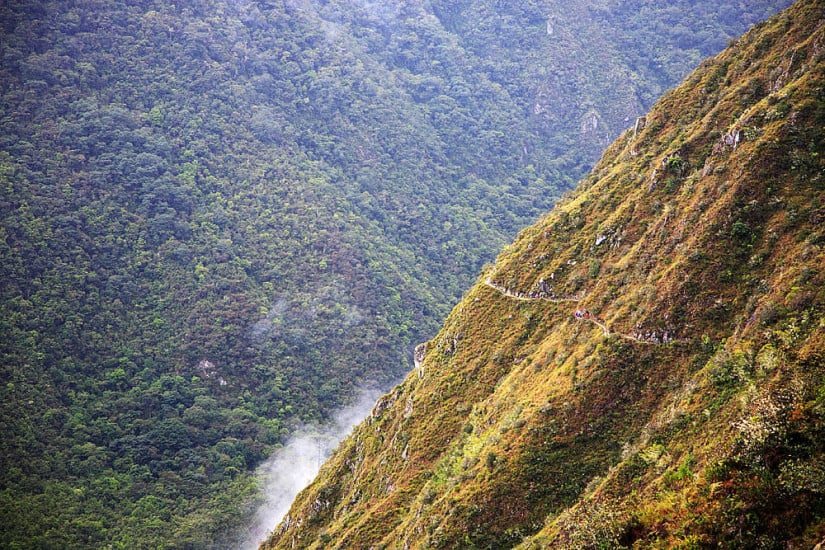
Inca Trail Machu Picchu (image source)
Inca Drawbridge – Machu Picchu Peru (image source)
The site is open year round, but you have to keep in mind that rain is a real issue in the area, especially from October till April, when the Machu Picchu weather can usually be described with only one word: rain. Landslides and earthquakes can happen in the area, so make sure you are extra careful when you plan your activities.
There are a number of excellent Machu Picchu tour packages to cater to a variety of needs and preferences, including several extra luxurious ones. Everyone can find at least one offer to meet their expectations, because this is a place for both adventure and relaxation seekers.
For anyone looking for a memorable experience while enjoying world-class accommodation in Machu Picchu, here’s a short list of excellent hotels in the area.
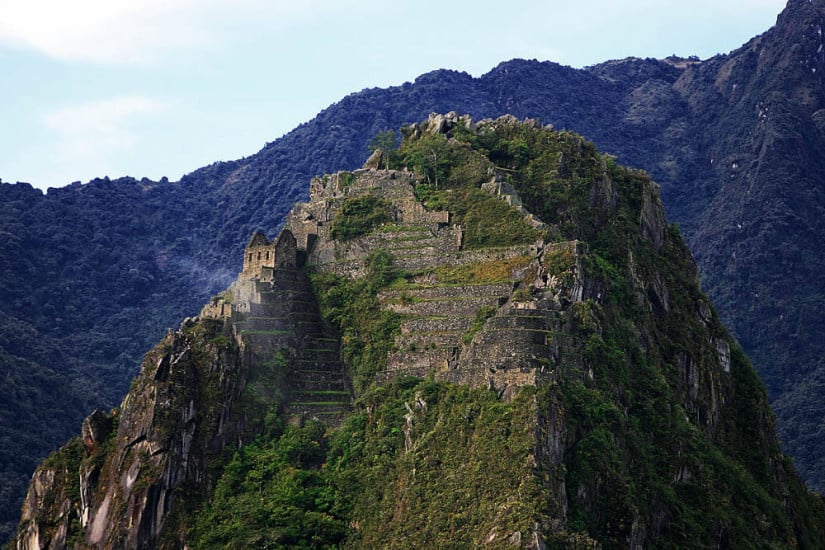
Huayna Picchu as seen from Machu Picchu (image source)
Top 3 Luxury Hotels in Machu Picchu
Belmond Sanctuary Lodge Machu Picchu
Offering direct views of the Huayna Picchu Mountain, Belmond Sanctuary Lodge is only 25 minutes away from the local train station. Guests are pampered with high-end facilities such as cable TV, Wi-Fi and iPod docking stations.
For the best possible experience, we recommend choosing a room with mountain views and private patios, because nothing is better than drinking your coffee outside while enjoying a majestic view filled with history. You can also enjoy aromatherapy massages and even book a trip to the Aguas Calientes thermal baths.
Sumaq Machu Picchu Hotel
Just 20 minutes away from the actual ruins, the Sumaq Machu Picchu Hotel offers five-star accommodation in an elegant yet relaxed Andean Design. Some of the rooms come with balconies overlooking the mountain, and they are all equipped with cable TV.
Guests have access to a variety of massage services and relaxation sessions at the Aqlla Spa. The hotel can also arrange for exciting visits to nearby tourist attractions.
Inkaterra Machu Picchu Pueblo Hotel
The hotel is located in the famous Aguas Calientes thermal baths area. It welcomes its guests in a beautiful colonial-style environment with tiled floors, Andean tapestries, alpaca blankets and spacious rooms.
A few select rooms also feature private pools, marble basins and fireplaces. There is a nice selection of activities for the guests, including massage sessions, Andean sauna, reading in the lounge library, browsing the gift shop, and taking guided tours of the area. Buffet breakfast and a la carte dinners are both included in the rates.

